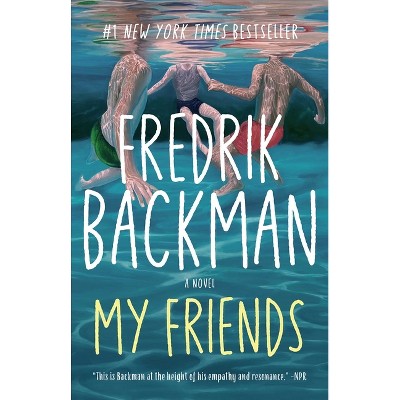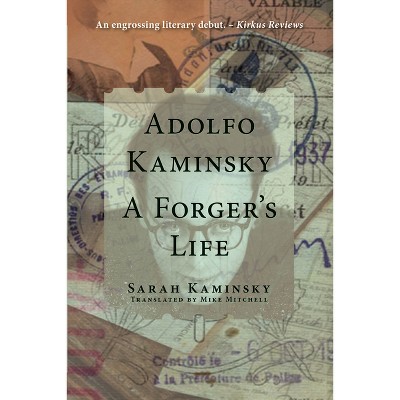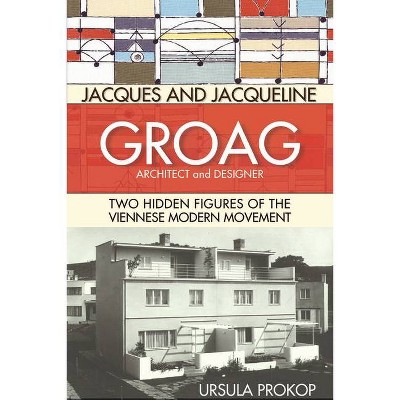Sponsored

The Mystery of the X202 - by Peter Wyeth (Paperback)
Pre-order
Sponsored
About this item
Highlights
- The intriguing life story of a designer who mastered the revolutionary cast aluminum process to produce world-class art, although working in near anonymity in the same factory for 50 years.A rare 1947 catalogue of modern furniture using a revolutionary cast aluminum process reveals the splendid art of James Leonard and a rich, complex story of conflict between design and industry.
- About the Author: Peter Wyeth is an award-winning filmmaker in both documentary and fiction and the author of several books.
- 200 Pages
Description
Book Synopsis
The intriguing life story of a designer who mastered the revolutionary cast aluminum process to produce world-class art, although working in near anonymity in the same factory for 50 years.
A rare 1947 catalogue of modern furniture using a revolutionary cast aluminum process reveals the splendid art of James Leonard and a rich, complex story of conflict between design and industry. John Leonard's Project X successfully launched a flood of striking chairs and desks into British and American schools, but his most beautiful design, the X202 "Armchair" remains unknown. By contrast, the paired "Student Chair," the X200, sold over a million copies, the most successful chair in British history. The central mystery of the chairs' contrasting fates involves his boss's dismissal as 'unfit' at the peak of success, the revolutionary WWII Mosquito fighter/bomber, obsession with a winning racecar, mysterious double lives, a financial scandal, and the eternal battle between art and business. As Wyeth details Leonard's double life and the unprecedented achievement of Project X, he reveals James Leonard to be a singularly talented designer. A fascinating tale of discovery that will intrigue the everyday reader as much as design historians and specialists.
Author Peter Wyeth has been called "the original forensic archaeologist of design, solving the crimes of under appreciation."
Review Quotes
"Gio Ponti recognized the brilliance of James Leonard's designs in 1948, and Peter Wyeth has done us all a great service in bringing him and ESA back into the spotlight. While in recent years there have been a number of studies of avant-garde pre-war furniture in Britain, there has been almost nothing on the post-war era when design and industry combined to build in volume. The Mystery of the X202 traces the extraordinary evolution of Leonard and the ESA from their Arts & Crafts heritage to their cutting-edge use of aluminum injection-casting and plywood with which they furnished over 80% of schools and the welfare state. As children most of us sat, however unknowingly, in one of his X200 chairs; now we can appreciate them." --Harry Charrington, Professor of Architecture, University of Westminster, London, UK
"Again, filmmaker, writer and researcher Peter Wyeth surprises us by unveiling the story of another unsung hero. The designer and engineer James Leonard can be described as the English version of the French constructer Jean Prouvé, whom he met in 1946 to discuss joint projects. Until this book, Leonard's story was unknown even to specialists. It is told here with profound insight and knowledge and throws a searchlight on the extraordinary contrast between his successful million-selling school chair (X200), made from postwar surplus aluminum, and the astonishing design of the X202 armchair. This die-cast aluminum wonder, of beautiful design, was cast in two highly-complex side castings, a new technique as used during World War II in the construction of the Mosquito fighter/bomber. Leonard developed the use of this method for his most advanced chair, of which no surviving example is known, but whose existence is proven in catalogue photographs, as the very finest example of forging ploughshares from swords." --Burkhardt Rukschcio, author Adolf Loos: Leben und Werk, Eileen Gray furniture restorer, Jean Prouvé restorer
"The life and work of James Leonard, and his boss Johnny Appleton, presents a
remarkable example of design creativity and entrepreneurial initiative that deserves to be far more widely known and celebrated. Their innovations in school furniture, as well as the ESA's pivotal role in the education supply industry, stand as conspicuous outliers in the narrative of Britain's post-war recovery. Specifically, the mass production of the unique X200 chair contrasts sharply with the conventional history of modern chair design as a succession of exclusive and expensive classics. Peter Wyeth's tenacious research in exhuming this enthralling story will now restore the name of James Leonard to its proper place in the pantheon of modern furniture design." --John Allan: Chairman, The Isokon Gallery Trust, former Director of Avanti Architects, author of Revaluing Modern Architecture and Berthold LubetkinAbout the Author
Peter Wyeth is an award-winning filmmaker in both documentary and fiction and the author of several books. The Lost Architecture of Jean Welz (DoppelHouse 2022) was named a Best Art Book of the Year by Hyperallergic. Peter Wyeth has been making films since the 1970s, including several with the Arts Council of Great Britain, one of which about a modernist block of flats in London, inspired by Hokusai (12 Views of Kensal House) was runner-up for best documentary of the year (Grierson Award). He started a film magazine North by North West, and in 1994 directed The Diary of Arthur Crew Inman, based on the 17-million-word, longest diary in America and named a London Times "Film of the Week." From 1999-2003, Wyeth was head of the film school at University of the Arts London, where he taught for ten years and set up the student channel Xplore.tv. His short film Pane won a Turner Classic Movies award in 2003. His book The Matter of Vision: Affective Neurobiology and Cinema (Indiana University Press 2015 and John Libbey Media in the UK), and over the past twelve years he has written over 30 articles on architecture and design for The Modernist magazine. He lives between Paris and London.Shipping details
Return details
Frequently bought together



Trending Book Pre-Orders














